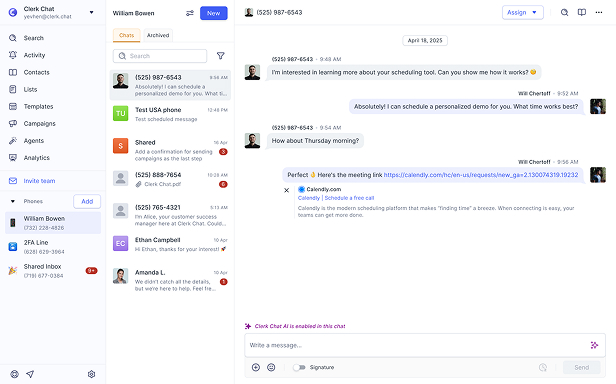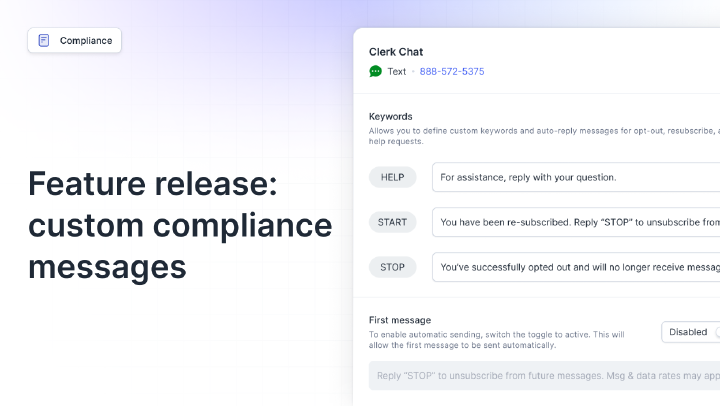Instant Messaging
[ˈɪnstənt ˈmɛsɪdʒɪŋ]Instant messaging represents a digital communication technology enabling real-time text exchange between users through internet-connected applications, revolutionizing how individuals and organizations communicate with immediate, persistent, and rich conversations.
Why Instant Messaging Matters
Instant messaging has fundamentally transformed communication expectations in both personal and professional contexts. The technology’s real-time nature satisfies modern demands for immediate responses, with studies showing 79% of consumers expect businesses to respond within minutes on IM platforms. This immediacy drives higher engagement rates compared to traditional channels, with IM conversations showing 3x higher completion rates than email exchanges and 5x faster resolution times than phone support.
The persistent nature of IM conversations creates valuable communication archives that email threading struggles to match. Organizations report 40% reduction in repeated questions when employees can search previous IM discussions, while customers appreciate continuing conversations without re-explaining issues. This persistence combines with rich media capabilities - from simple emoji reactions to complex file sharing - creating more expressive and efficient communication than text-only channels allow.
The global reach and platform diversity of instant messaging opens unprecedented communication opportunities. WhatsApp connects 2 billion users globally, while enterprise platforms like Slack and Microsoft Teams transformed workplace collaboration. This ubiquity means organizations can meet audiences on their preferred platforms rather than forcing channel adoption. The network effects create powerful engagement dynamics: businesses using IM for customer service see 67% higher satisfaction scores, while internal IM adoption correlates with 32% faster project completion rates.
How Instant Messaging Works
Instant messaging operates through sophisticated technical infrastructure delivering seamless real-time communication:
Client-Server Architecture: IM systems use client applications (mobile apps, web interfaces, desktop software) connecting to central servers. Clients maintain persistent connections using protocols like WebSocket or long polling, enabling instant message delivery. When users send messages, clients transmit data to servers which route to recipients immediately if online, or queue for later delivery.
Protocol Standards: Different platforms use varying protocols. XMPP (Extensible Messaging and Presence Protocol) powers open systems like Google Chat. Proprietary protocols drive platforms like WhatsApp (modified Signal Protocol) and Slack (custom WebRTC implementation). These protocols handle message formatting, encryption, presence management, and multimedia delivery.
Message Synchronization: Modern IM ensures conversation continuity across devices through sophisticated sync mechanisms. Messages store on servers with unique identifiers, timestamps, and delivery status. When users switch devices, clients download message history and maintain read status. Conflict resolution algorithms handle simultaneous edits or deletions across devices.
Presence and Typing Indicators: IM platforms track user availability through heartbeat signals between clients and servers. Status updates (online, away, busy) broadcast to contact lists. Typing indicators use lightweight notifications sent while users compose messages, creating conversational awareness without actual message transmission.
Multimedia Handling: Beyond text, IM platforms process images, videos, documents, and voice messages. Files upload to cloud storage with messages containing reference links rather than embedded content. This approach enables quick message delivery while allowing asynchronous media download. Compression algorithms optimize media for different network conditions.
Notification Systems: Push notification services ensure message awareness even when apps aren’t active. Platforms integrate with OS-level notification systems (Apple Push Notification Service, Firebase Cloud Messaging) to deliver alerts. Smart notification grouping and priority systems prevent overwhelming users while ensuring critical messages get attention.
Best Practices with Instant Messaging
Establish Channel Purpose and Guidelines - Define clear purposes for different IM channels or conversation types. Create naming conventions that immediately communicate channel intent. Document expected response times, appropriate content types, and escalation procedures. Regularly audit channels to archive inactive conversations and maintain organizational clarity.
Manage Notification Strategies - Configure intelligent notification settings balancing awareness with productivity. Use keyword alerts for critical terms requiring immediate attention. Schedule quiet hours respecting work-life boundaries. Implement notification batching for non-urgent channels. Train users on customizing personal notification preferences while maintaining team communication needs.
Implement Security Protocols - Enforce strong authentication requirements including biometric or multi-factor options. Establish data sharing policies defining acceptable file types and sizes. Regular security training covering phishing attempts through IM platforms. Configure message retention policies balancing compliance needs with storage costs. Monitor for shadow IT preventing unauthorized IM platform usage.
Optimize Search and Discovery - Maintain consistent naming conventions for easy searchability. Use tags and keywords strategically in important messages. Create knowledge repositories linking to frequently referenced IM conversations. Implement bot or automation solutions for common query responses. Regular cleanup of outdated information maintaining search relevance.
Balance Synchronous and Asynchronous Communication - Set expectations about IM availability versus always-on assumptions. Use status messages communicating focus time or current priorities. Encourage threading for complex topics requiring thoughtful responses. Define scenarios warranting channel switches to email or video calls. Monitor response time metrics identifying communication bottlenecks.
Scale Through Automation - Deploy chatbots handling routine inquiries before human intervention. Implement workflow automations triggered by specific keywords or patterns. Use broadcast capabilities judiciously for important announcements. Create template responses for common scenarios while maintaining personal touch. Regular bot training based on conversation analysis.
Maintain Professional Standards - Establish tone guidelines balancing casual IM nature with professional requirements. Define emoji and GIF usage policies reflecting organizational culture. Create templates for sensitive communications requiring careful wording. Regular training on written communication skills adapted for IM brevity. Monitor public-facing IM ensuring brand consistency.
Real world examples
- Customer Service
Resolved 82% of queries through IM without phone escalation
Read more - Education
Connected 95% of students through instant messaging platforms
Read more
Common misconceptions
IM platforms now power critical business communications, customer support, and team collaboration
Platforms vary significantly in security, features, protocols, and business capabilities
Enterprise IM platforms offer end-to-end encryption, compliance tools, and audit trails
IM requires internet connectivity and app installation, while SMS works on any phone
Modern IM platforms offer extensive APIs, webhooks, and enterprise integrations
Related terms
In this article:
Ready to use your business number for text messaging?
Thousands of businesses are already experiencing the power of conversational messaging through SMS. Join us. Free trial and paid tiers available.
Get StartedFAQ
Have questions? We've got answers.
Find what you need quickly and clearly with our most frequently asked questions.
Instant messaging enables real-time text-based communication between users through internet-connected applications or platforms. Unlike email's asynchronous nature or SMS's cellular network dependency, IM delivers messages immediately when both parties are online, showing presence indicators, typing notifications, and read receipts. Key characteristics include persistent chat histories, multimedia support, group conversations, and platform-specific features like voice notes, reactions, and file sharing. Modern IM encompasses everything from consumer apps like WhatsApp to enterprise platforms like Slack.
Start by assessing communication needs: internal team collaboration, customer support, or both. For internal use, evaluate platforms like Microsoft Teams or Slack based on existing technology stack integration. Customer-facing IM requires considering where your audience already communicates - WhatsApp, Facebook Messenger, or web chat. Implementation involves platform selection, user onboarding, establishing communication guidelines, and integrating with existing systems like CRM or helpdesk software. Plan for administration overhead including user management, security policies, and compliance requirements. Most platforms offer APIs enabling custom integrations and automation.
Consumer platforms like WhatsApp and Telegram offer free basic usage but charge for business features ($50-500/month for verified accounts and APIs). Enterprise platforms typically use per-user pricing: Slack ($7-15/user/month), Microsoft Teams ($4-22/user/month with Office 365), or standalone solutions ($5-25/user/month). Additional costs include integration development ($5,000-50,000), storage for message history and files, compliance addons, and potential infrastructure for on-premise deployments. Calculate total cost including licenses, implementation, training, and ongoing administration.
IM offers significant advantages over phone and email: real-time response without call scheduling, persistent searchable history unlike phone conversations, and faster exchange than email threading. Response times average 90 seconds for IM versus 90 minutes for email. IM supports multitasking with multiple concurrent conversations and rich media sharing. However, phone calls remain superior for complex discussions requiring nuance, while email better suits formal communications needing documentation. SMS maintains advantages in universal reach without app requirements. Organizations typically blend channels based on use case.
Essential security features include end-to-end encryption for message content, multi-factor authentication for access control, and SOC 2 Type II certification for platform security. Compliance requirements vary by industry: HIPAA for healthcare mandates encryption and audit logs, FINRA for finance requires message archiving and supervision, GDPR necessitates data portability and deletion capabilities. Look for platforms offering message retention policies, e-discovery support, data loss prevention (DLP), and administrative controls for user management. On-premise deployment options provide additional control for highly regulated industries.
Establish clear communication protocols defining appropriate IM use versus email or meetings. Implement notification management strategies: scheduled do-not-disturb hours, channel-specific alerts, and keyword notifications for critical messages. Create channel organization systems separating urgent operational needs from general discussion. Train users on presence indicators and status messages to signal availability. Use threading for topic organization and search functionality for information retrieval. Monitor metrics like response time and message volume to identify optimization opportunities. Consider AI-powered summarization and smart routing to manage high volumes efficiently.




